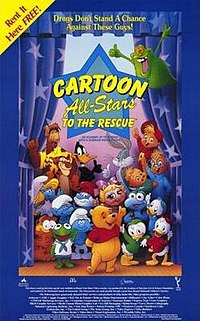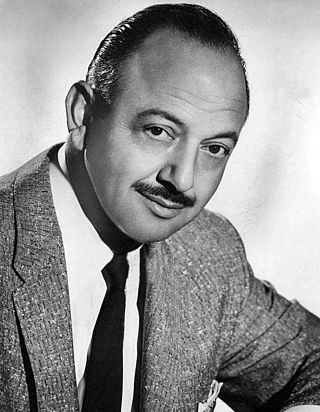
Melvin Jerome Blanc was an American voice actor and radio personality whose career spanned over 60 years. During the Golden Age of Radio, he provided character voices and vocal sound effects for comedy radio programs, including those of Jack Benny, Abbott and Costello, Burns and Allen, The Great Gildersleeve, Judy Canova, and his own short-lived sitcom.

Bugs Bunny is a fictional character created in the late 1930s at Warner Bros. Cartoons and voiced originally by Mel Blanc. Bugs is best known for his featured roles in the Looney Tunes and Merrie Melodies series of animated short films, produced by Warner Bros. Earlier iterations of the character first appeared in Ben Hardaway's Porky's Hare Hunt (1938) and subsequent shorts before Bugs's definitive characterization debuted in Tex Avery's A Wild Hare (1940). Bob Givens, Chuck Jones, and Robert McKimson are credited for defining Bugs's design.

Looney Tunes is an American animated franchise produced and distributed by Warner Bros. It began as a series of short films that originally ran from 1930 to 1969, along with its partner series Merrie Melodies, during the golden age of American animation. Following a revival in the late 1970s, new shorts were released as recently as 2014. The two series introduced a large cast of characters, including Bugs Bunny, Daffy Duck, and Porky Pig. The term Looney Tunes has since been expanded to also refer to the characters themselves.

Daffy Duck is a fictional character created by animators Tex Avery and Bob Clampett for Leon Schlesinger Productions. Styled as an anthropomorphic black duck, he has appeared in cartoon series such as Looney Tunes and Merrie Melodies, in which he is usually depicted as a foil for either Bugs Bunny, Porky Pig or Speedy Gonzales. He was one of the first of the new "screwball" characters that emerged in the late 1930s to replace traditional everyman characters who were more popular earlier in the decade, such as Mickey Mouse, Porky Pig, and Popeye.

Porky Pig is an animated character in the Warner Bros. Looney Tunes and Merrie Melodies series of cartoons. He was the first character created by the studio to draw audiences based on his star power, and the animators created many critically acclaimed shorts featuring the character. Even after he was supplanted by later characters, Porky continued to be popular with moviegoers and, more importantly, the Warners directors, who recast him in numerous everyman and sidekick roles.

Duck Amuck is an American animated surreal comedy short film directed by Chuck Jones and written by Michael Maltese. The short was released on January 17, 1953, as part of the Merrie Melodies series, and stars Daffy Duck.
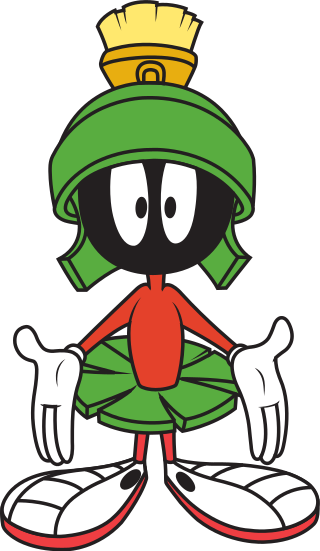
Marvin the Martian is an alien race character from the Looney Tunes and Merrie Melodies series. He frequently appears as a villain in cartoons and video games, and wears a Roman soldier's helmet and skirt. The character has been voiced by Mel Blanc, Joe Alaskey, Bob Bergen and Eric Bauza, among others.

Sylvester J. Pussycat Sr. is a fictional character, an anthropomorphic cat in the Looney Tunes and Merrie Melodies series of cartoons. Most of his appearances have him often chasing Tweety Bird, Speedy Gonzales, or Hippety Hopper. He appeared in 103 cartoons in the golden age of American animation, lagging only behind superstars Bugs Bunny, Porky Pig, and Daffy Duck. Three of his cartoons won Academy Awards, the most for any starring a Looney Tunes character: they are Tweetie Pie, Speedy Gonzales, and Birds Anonymous.

The Great Piggy Bank Robbery is a 1946 Warner Bros. Looney Tunes theatrical cartoon directed by Bob Clampett. The cartoon was released on July 20, 1946, and stars Daffy Duck. The short is Clampett's penultimate Warner cartoon, produced shortly before he left the studio.
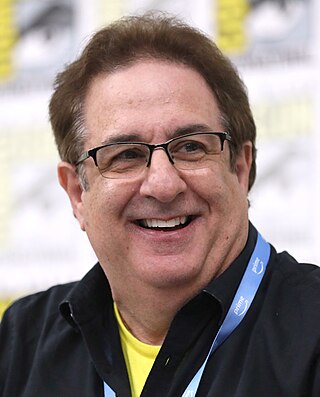
Jeffrey Bergman is an American actor voice actor and impressionist who has provided the modern-day voices of various classic cartoon characters, most notably with Looney Tunes and Hanna-Barbera.
This is a list of all cartoons featuring Porky Pig. Directors are listed in parentheses.
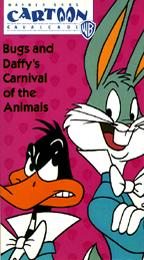
Bugs and Daffy's Carnival of the Animals is a 1976 live action/animated television special featuring the Looney Tunes characters Bugs Bunny and Daffy Duck and directed by Chuck Jones.

Elmer J. Fudd is an animated cartoon character in the Warner Bros. Looney Tunes/Merrie Melodies series and the archenemy of Bugs Bunny. His aim is to hunt Bugs, but he usually ends up seriously injuring himself and other antagonizing characters. He speaks in an unusual way, replacing his Rs and Ls with Ws, so he often refers to Bugs Bunny as a "scwewy" or "wascawwy (rascally) wabbit". Elmer's signature catchphrase is, "Shhh. Be vewy vewy quiet, I'm hunting wabbits", as well as his trademark laughter.

The Looney Tunes Show is an American animated sitcom produced by Warner Bros. Animation, and aired on Cartoon Network for two seasons from May 3, 2011, to November 2, 2013. The series differed from others featuring characters from the Looney Tunes, by focusing on stories conformed around a sitcom format involving the characters of Bugs Bunny and Daffy Duck, who live a surburban life together within a neighborhood of fellow cartoon neighbors, dealing with various issues in their own way. Both the characters from the Looney Tunes, as well as the Merrie Melodies theatrical cartoon shorts, were given a 21st century update, with episodes also including a musical short; the first series also included computer-animated shorts involving new antics between Wile E. Coyote and the Road Runner.
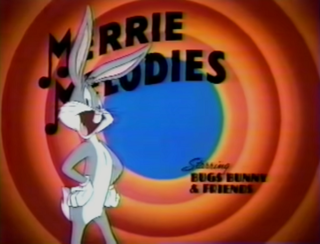
Merrie Melodies Starring Bugs Bunny & Friends is an animated anthology television series that aired weekdays in syndication from 1990 to 1992 and on the Fox Kids Network from 1992 to 1994. Originally made to coincide with Bugs Bunny's 50th birthday and the debut of Tiny Toon Adventures, the series featured cartoons from the Looney Tunes and Merrie Melodies library and was distributed by Warner Bros. Domestic Television Distribution.

Brenda Lee Banks was an American animator, who was one of the first African American women to work as a professional animator.
Marco Mete is an Italian actor and voice actor.
